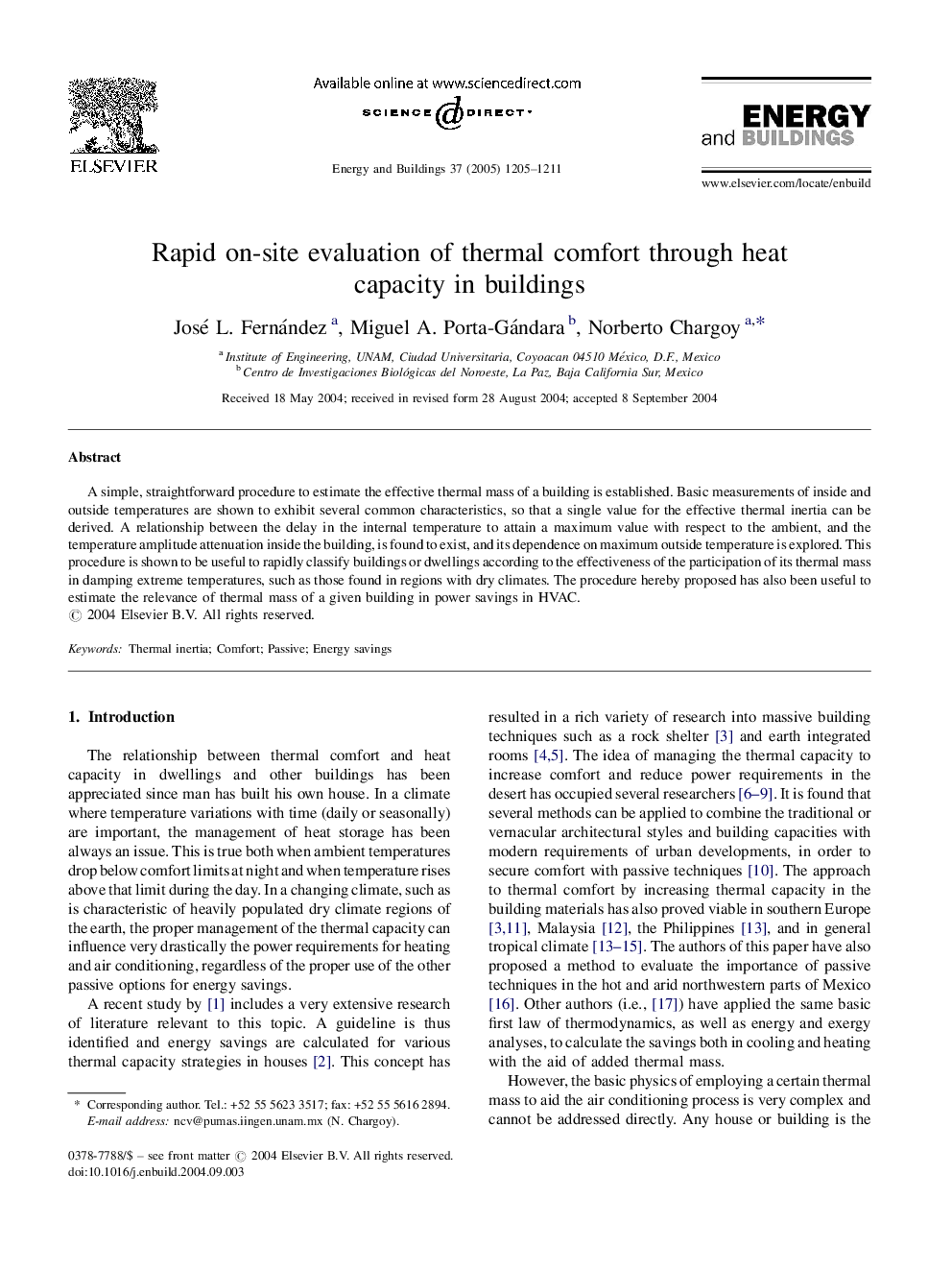| Article ID | Journal | Published Year | Pages | File Type |
|---|---|---|---|---|
| 10286123 | Energy and Buildings | 2005 | 7 Pages |
Abstract
A simple, straightforward procedure to estimate the effective thermal mass of a building is established. Basic measurements of inside and outside temperatures are shown to exhibit several common characteristics, so that a single value for the effective thermal inertia can be derived. A relationship between the delay in the internal temperature to attain a maximum value with respect to the ambient, and the temperature amplitude attenuation inside the building, is found to exist, and its dependence on maximum outside temperature is explored. This procedure is shown to be useful to rapidly classify buildings or dwellings according to the effectiveness of the participation of its thermal mass in damping extreme temperatures, such as those found in regions with dry climates. The procedure hereby proposed has also been useful to estimate the relevance of thermal mass of a given building in power savings in HVAC.
Related Topics
Physical Sciences and Engineering
Energy
Renewable Energy, Sustainability and the Environment
Authors
José L. Fernández, Miguel A. Porta-Gándara, Norberto Chargoy,
